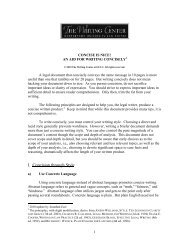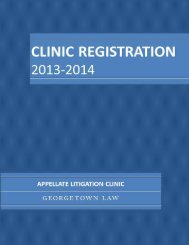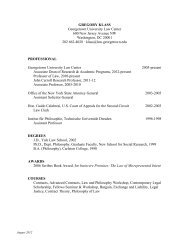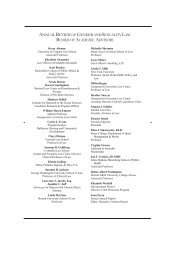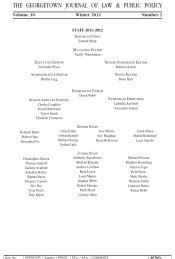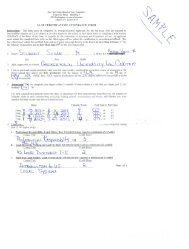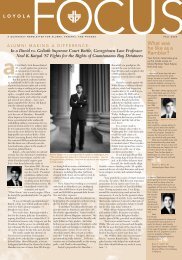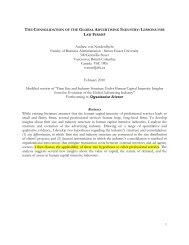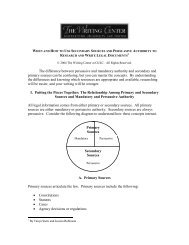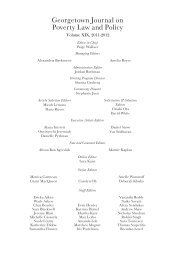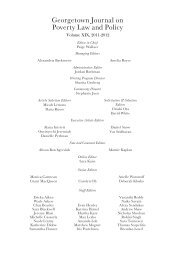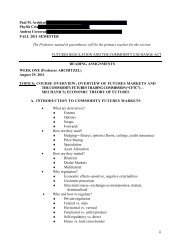Date: April 12, 2013 Topic: The Shrinking ... - Georgetown Law
Date: April 12, 2013 Topic: The Shrinking ... - Georgetown Law
Date: April 12, 2013 Topic: The Shrinking ... - Georgetown Law
You also want an ePaper? Increase the reach of your titles
YUMPU automatically turns print PDFs into web optimized ePapers that Google loves.
More specifically, we estimate a statistical model of the form:<br />
! !" = ! ! ! ! !!! + ! ! ! !" + ! ! + ! ! + ! !"<br />
where ! !" is the natural log of the count of lawyers divided by sales in firm i of year t, ! !" is a<br />
vector of explanatory variables, ! ! is a year effect, ! ! is a time-invariant firm-specific effect<br />
and ! !" is the error term.<br />
<strong>The</strong> GMM estimator originally proposed by Arellano et al. (1991) uses first<br />
differencing to remove unobservable firm-specific effects and then instruments the<br />
endogenous variables using lagged levels of the series. However, this approach is<br />
problematic in our setting as the first-differenced GMM estimator is found to have large<br />
finite sample bias and poor precision when time series are short and persistent (Alonso-<br />
Borrego et al., 1999; Blundell et al., 1998). Instead, we employ the system GMM estimator<br />
suggested by Arellano et al. (1995) and Blundell et al. (1998). This approach uses lagged<br />
differences as instruments for equations in levels, in addition to lagged levels as instruments<br />
for equations in first differences. <strong>The</strong> system estimator introduces an additional assumption<br />
that changes in instrumenting variables are uncorrelated with the fixed effects. All models<br />
were calculated using the xtabond2 Stata module (Roodman, 2006).<br />
To address concerns about simultaneity bias we treat the number of law firms and<br />
general counsel in TMT variables as endogenous while the remaining explanatory variables<br />
as predetermined. From the control variables, selling, general and administrative expenses are<br />
endogenous as they proxy overall legal expenses. Litigation cases are also treated as<br />
endogenous given that larger legal departments are more likely to take cases to court. <strong>The</strong><br />
remaining control variables are treated as exogenous. Following standard treatment, we<br />
specify lagged differences one for endogenous variables and lagged differences zero for<br />
predetermined variables (in orthogonal deviations) for the levels equation. We use the<br />
forward orthogonal deviation transformation instead of first differencing given that our panel<br />
21



